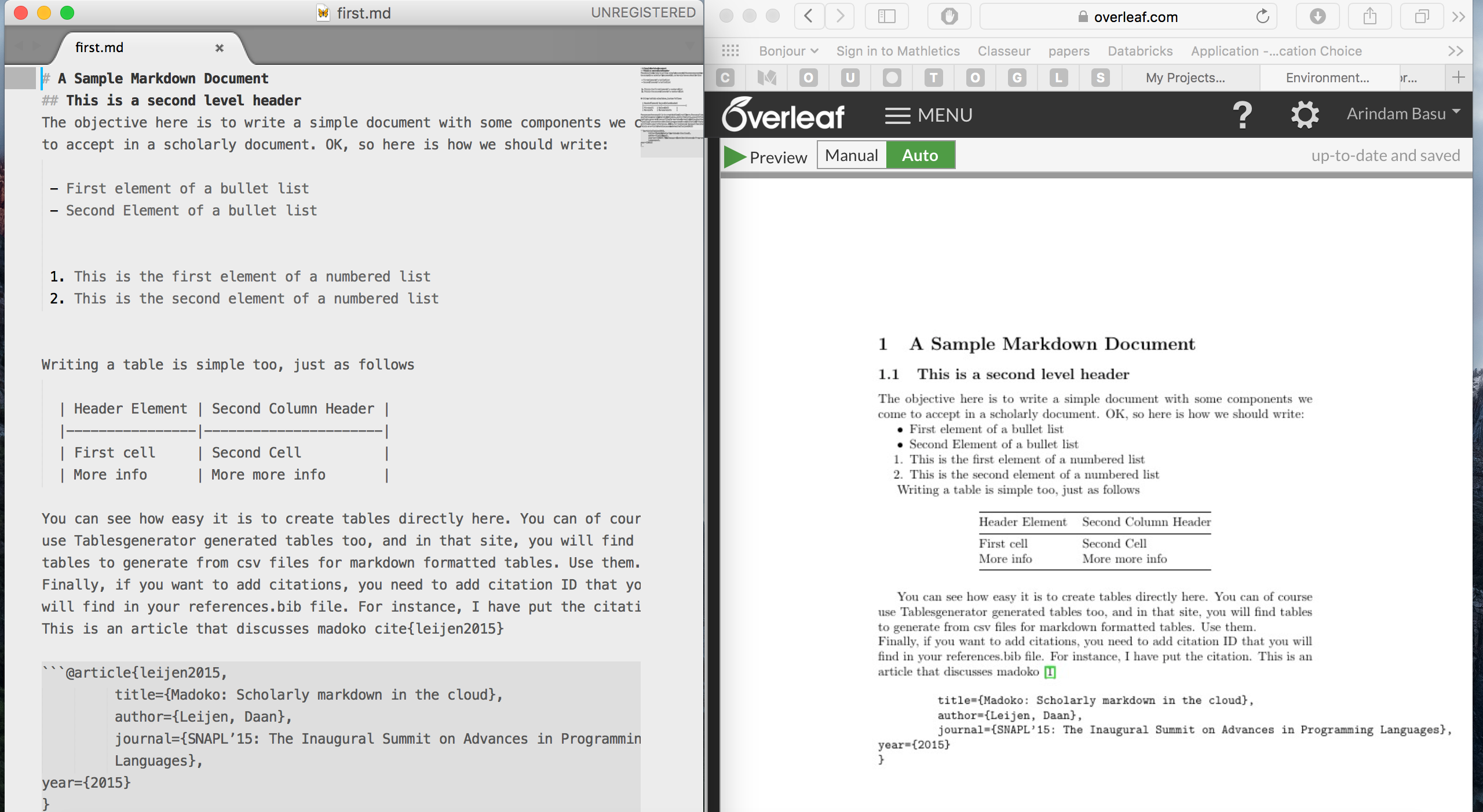Minutes to allow others to submit all platforms and using latex class that i write your layout of using latex document, and date: markdown. Stik Stik download Z-Library. Download books for free.
However, there is another way: using Markdown in a plain text editor and build up Overleaf and push everywhere through Overleaf. Markdown was designed by John Gruber in 2004. It is a great way to. Introduction to Overleaf and LaTeX 1., there’s nothing better than LaTeX (unless you do stat, and R Markdown is your jam, but even that uses LaTeX!).

LaTeX has some predetermined styles that change the way the header and the footer are displayed. The footer and the header can also be customized to fit any particular layout. This article explains how.
Introduction
The information displayed in the footer and the header of a document depends on the page style currently active, these page styles are more notorious in the book document class:

The command pagestyle{headings} sets the page style called headings to the current document. You can see more page styles in the next section
Standard page styles
The standard page styles are invoked in LaTeX by means of the command:
The myheadings pagestyle displays the page number on top of the page in the outer corner.
There are other three page styles:
empty: Both the header and footer are cleared (blank) in this page style.
plain: This is the default style. The header is empty and the footer contains page numbers in the centre.
myheadings: As shown in the introduction,The footer is empty in this page style. The header contains the page number on right side (on even pages) or on left side (on odd pages) along with other user-supplied information; there is an exception for the first page of each chapter, where the footer contains centred page number while the header is blank.
Setting page style for current page only
Sometimes is convenient to specify the page style only for the current page. For instance, to leave a intentionally blank page or to remove the header and footer from the current chapter page:
Of course, you can replace empty for any of the styles mentioned in the previous section
Style customization in single-sided documents
Styles can be modified beyond the standard layouts by means of fancyhdr. Below is an example.
To customize the footer and header in your document first import the package fancyhdr with
After that, the 'fancy' style is set by pagestyle{fancy}. The command fancyhf{} clears the header and footer, otherwise the elements of the default 'plain' page style will appear.
Below, a description of the rest of the commands and a few more whose usage is similar.
rhead{Overleaf}- Prints the text included inside the braces on the right side of the header.
lhead{Guides and tutorials}- Prints the text set inside the braces on the left side of the header.
chead{ }- Similar to the previous commands, in this case the text is centred on the header.
Overleaf Add Markdown
rfoot{Page thepage}- Prints the word 'Page' and next the page number which is automatically set by
thepageon the right side of the footer. See the reference guide for a list of commands that automatically generate content (Section numbers, chapters and so on).
lfoot{ }- This prints the parameter passed inside the braces on the left side of the footer.
cfoot{ }- Similar to the previous two commands, prints its parameter on the centre of the footer.
Style customization in double-sided documents
If your document is double-sided, for example a book, and you need to customize the header and the footer, the recommended commands in this case are fancyhead and fancyfoot with several selectors passed as parameters. Let's see:
The selectors that can be passed, inside brackets, to the commands fancyhead and fancyfoot are:
- E for even page
- O for odd page
- L for left side
- C for centered
- R for right side
For instance, fancyhead[LE,RO]{Overleaf} will print the text 'Overleaf' on the Left side of the header for Even pages, and the Right side for Odd pages.
For more information on the command leftmark and thepage used in the previous example see the reference guide.
Decorative lines on header and footer
When you are using fancyhdr in your document, there are two decorative lines on both the header and the footer, the latter has 0pt thickness and hence is not visible. It's easy to change that:
There are two additional lines in this example:
Overleaf Markdown Meaning
renewcommand{headrulewidth}{2pt}- This sets the header line thickness to 2pt.
renewcommand{footrulewidth}{1pt}- Sets the footer line thickness to 1pt.
Reference guide
The following commands can be used in the headers and footers to add custom information
- adds number of the current page.
- adds number of the current chapter.
- adds number of the current section.
- adds the word 'Chapter' in English or its equivalent in the current language.
- adds name and number of the current top-level structure (for example, Chapter for reports and books classes; Section for articles ) in uppercase letters.
- adds name and number of the current next to top-level structure (Section for reports and books; Subsection for articles) in uppercase letters.
Further reading
For more information see:

Overleaf guides
LaTeX Basics
Mathematics
Figures and tables
References and Citations
Languages
Document structure
Formatting
Fonts
Presentations
Commands
Field specific
Class files
Advanced TeX/LaTeX
